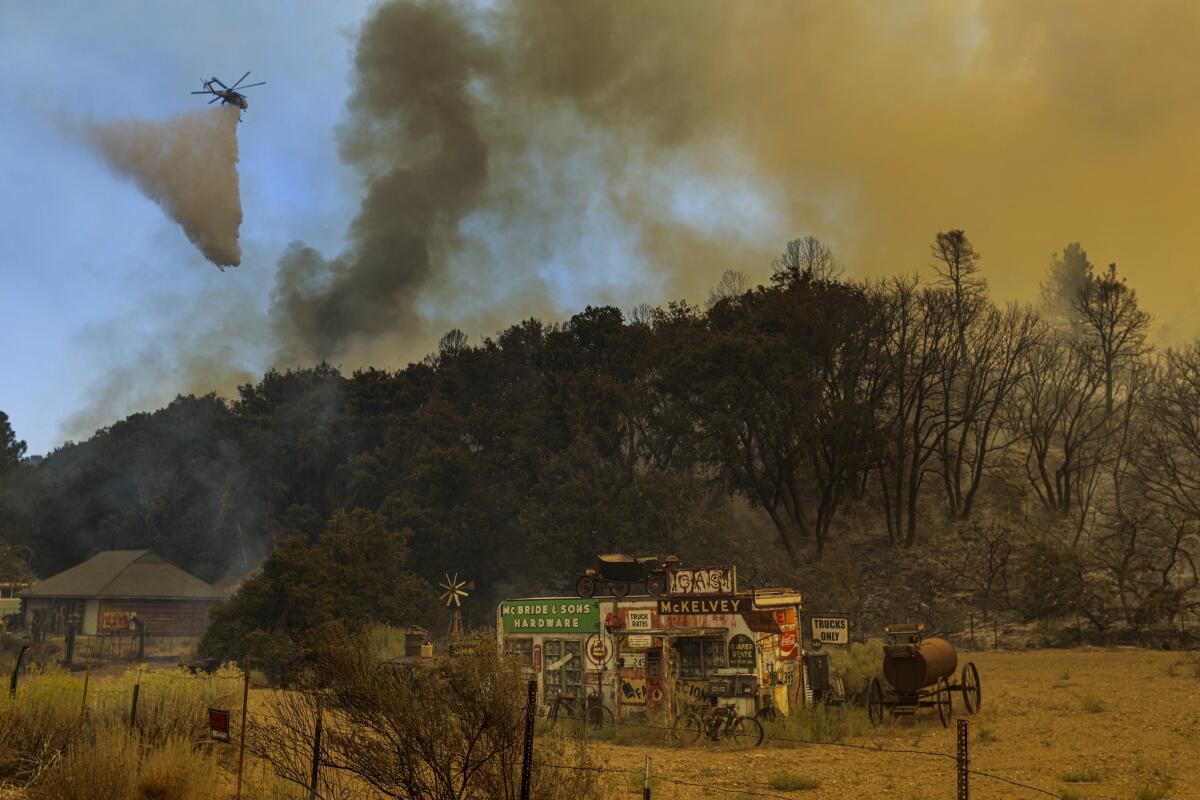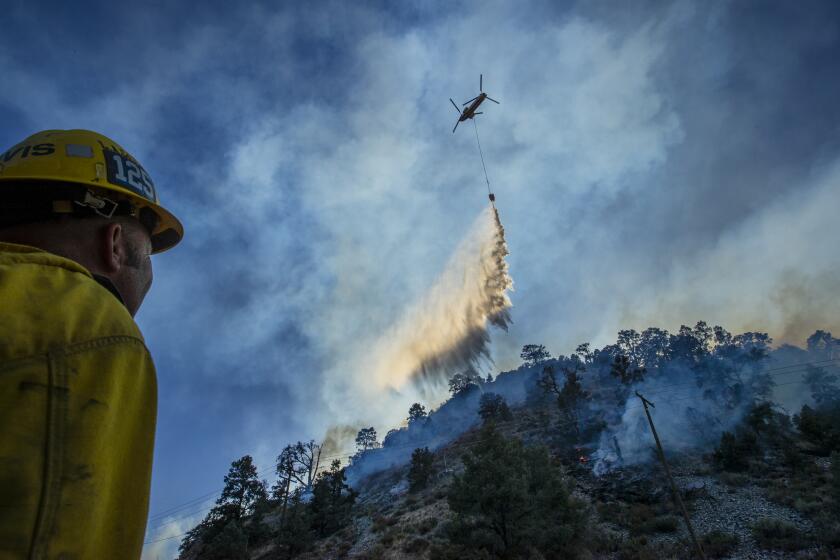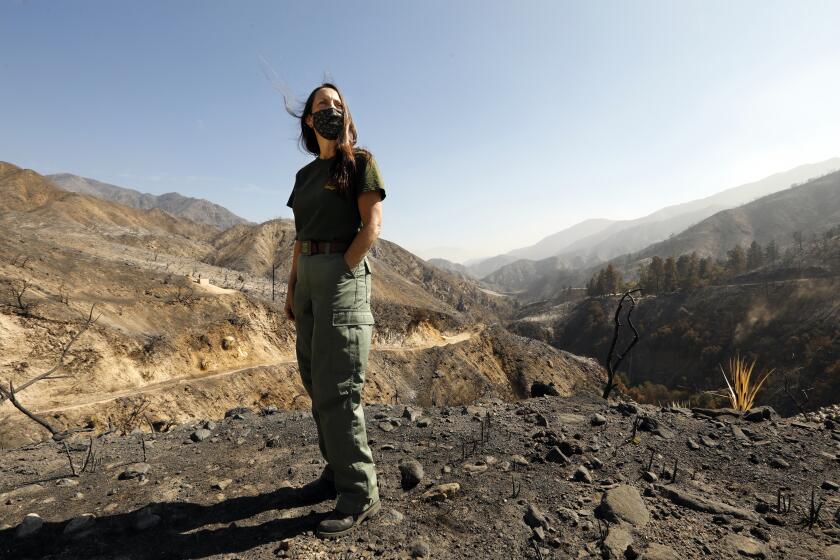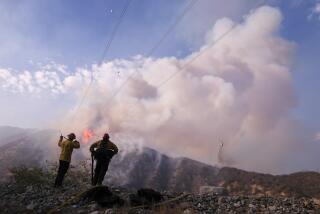U.S. sues Edison and tree contractor over Bobcat fire

The federal government filed a lawsuit Friday accusing Southern California Edison and its contractor of failing to properly maintain trees that came into contact with power lines and sparked the 2020 Bobcat fire, one of the largest blazes ever in Los Angeles County.
The lawsuit, filed in U.S. District Court against Southern California Edison and Utility Tree Service, seeks damages in excess of $121 million for the cost of extinguishing the blaze and the resulting damage to property and natural resources.
“Forest Service investigators determined that the Bobcat fire ignited due to a tree in contact with power lines [conductors] owned and operated by SCE and maintained by SCE and UTS,” the complaint states. “The contact resulted in ignition of vegetation on a branch, which fell to the ground and spread.”
Southern California Edison says fire investigators seized their equipment and nearby tree branches
Edison spokesman Reggie Kumar said the company is reviewing the lawsuit and “it would not be appropriate to discuss outside of the court process.”
“Our thoughts remain with the people who were affected by the Bobcat fire, who lost homes and vehicles and were evacuated,” he said.
A representative for Utility Tree Service could not be immediately reached for comment Friday evening.
The Bobcat fire began on Sept. 6, 2020, and ultimately burned close to 116,000 acres — an area larger than Denver. Federal officials say at least 99,000 of the acres scorched were within Angeles National Forest.
After the Bobcat fire, rangers and biologists consider rescue operations for protected species in the San Gabriel Mountains.
The blaze also destroyed 87 homes, 83 other structures and 178 vehicles. An additional 28 homes were also damaged and at least six firefighters were injured while battling the fire.
“The public has been prevented from recreating on the more than 100 miles of popular system trails and in numerous campgrounds within the burn area in the nearly three years following the fire,” the complaint states. “The fire effects have been, and will be, detrimental to habitats and wildlife, including the federally endangered mountain yellow-legged frog and other federally threatened fish and birds.”
More to Read
Sign up for Essential California
The most important California stories and recommendations in your inbox every morning.
You may occasionally receive promotional content from the Los Angeles Times.












